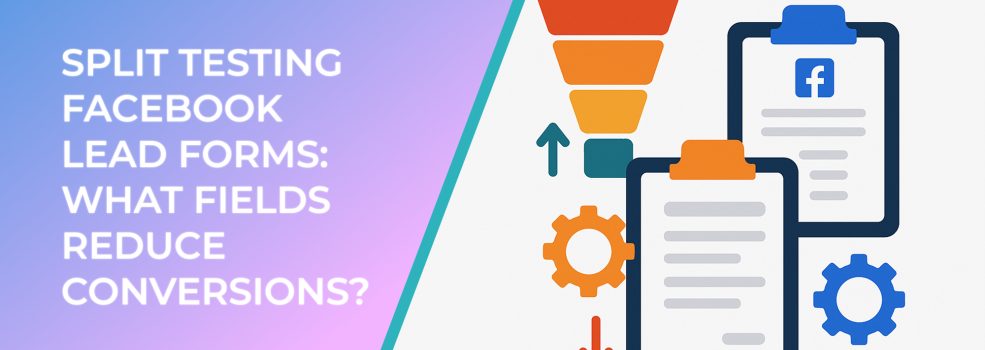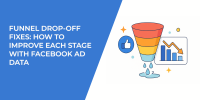Split testing (or A/B testing) is essential when optimizing Facebook Lead Forms. By comparing different versions of your lead forms, you can identify what works best for your target audience. Facebook lead generation relies on minimizing friction in the signup process, and each form field you include can either help qualify leads or hinder conversions.
Key Findings from Split Testing Facebook Lead Forms
Visual representation of how increasing field count impacts conversion rates in Facebook Lead Forms
Based on aggregate campaign data and industry benchmarks:
-
Forms with 3 or fewer fields saw a conversion rate of 14.2%, compared to just 6.8% for forms with 5 or more fields.
-
Asking for a phone number decreased conversions by 17% on average.
-
Including a dropdown menu for job titles instead of a free-text field improved form completion by 11%.
-
Forms with conditional logic (e.g., dynamic questions based on prior answers) had 8% higher engagement but took longer to complete, which slightly decreased overall submission rates.
-
Pre-filled fields based on Facebook profile data resulted in 19% higher conversion rates.
What Fields Typically Reduce Conversions
Infographic highlighting which form fields are most likely to reduce Facebook Lead Form conversions
-
Phone Number: Users are reluctant to share personal contact details, especially early in the funnel.
-
Open-Ended Questions: These increase cognitive load and time spent, causing drop-offs.
-
Multiple Choice with Too Many Options: Lists longer than 6 options reduce completion rates.
-
Company Name: This field often feels intrusive or unnecessary, especially in B2C lead gen.
-
Date of Birth: Unless required for compliance, this field significantly reduces conversions.
Best Practices for High-Converting Facebook Lead Forms
-
Limit your forms to 3 essential fields.
-
Use custom audiences to tailor the lead form experience to known segments.
-
Enable auto-fill fields using Facebook profile data.
-
Test one element at a time during A/B testing.
-
Focus on intent-based targeting using lookalike audiences and behavioral data.
How LeadEnforce Helps Optimize Your Facebook Lead Ads
LeadEnforce makes it easy to create and test custom audiences from your competitors' social media activity, significantly improving Facebook ad optimization. With hyper-targeted segments and split testing insights, you can better identify what form formats your audience responds to. This level of precision helps lower your Facebook advertising cost and boost qualified lead volume.
Suggested Reads from the LeadEnforce Blog:
-
Why Awareness Campaigns Should Be Part of Your Facebook Ads Strategy
-
Why Your Target Audience Might Be Too Broad — Even If It Looks Right
Conclusion
Every field in your Facebook Lead Form is a potential barrier or gateway to conversion. Through methodical split testing and data-driven optimization, you can refine your lead generation process, attract more qualified leads, and reduce wasted ad spend. With the right tools and strategies—like those provided by LeadEnforce—you can gain a competitive edge in Facebook lead gen.

